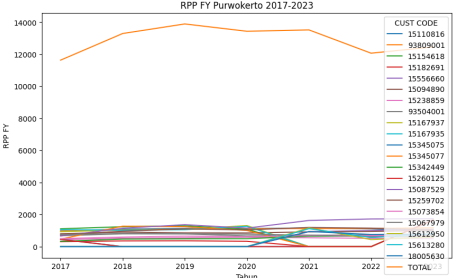Strategic Operational Management in Regional Development: Analyzing the Efficiency and Effectiveness of Public Fiscal Policies in Banyumas, Indonesia

Submission to VIJ 2024-07-29
Keywords
- Strategic operational management,
- Regional Revenue and Expenditure Budget (RPP),
- Gross Regional Domestic Product (PDRB),
- Economic performance,
- Operational efficiency
- Strategic planning ...More
Copyright (c) 2024 Daniar Casta Cabase, Raden Johnny Hadi Raharjo

This work is licensed under a Creative Commons Attribution 4.0 International License.
Abstract
This research examines the strategic operational management of public fiscal policies and their impact on regional development in Banyumas, Indonesia. By analyzing the efficiency and effectiveness of the Regional Revenue and Expenditure Budget (RPP) and its influence on the Gross Regional Domestic Product (PDRB), this study aims to identify key strategic factors that enhance regional economic performance. Utilizing advanced statistical models and operational efficiency metrics, the study provides a comprehensive evaluation of how strategic fiscal management can drive sustainable regional growth. Operational management and strategic planning play pivotal roles in determining the efficiency and effectiveness of public fiscal policies, particularly in the context of regional development. This research seeks to investigate these dynamics within the Banyumas region of Indonesia, focusing on how strategic operational management of the Regional Revenue and Expenditure Budget (RPP) influences economic growth as measured by the Gross Regional Domestic Product (PDRB).
References
- Afonso, A., & Sousa-Leite, J. (2019). The transmission of unconventional monetary policy to bank credit supply: evidence from the TLTRO. In Analytical Biochemistry (Vol. 11, Issue 1). http://link.springer.com/10.1007/978-3-319-59379-1%0Ahttp://dx.doi.org/10.1016/B978-0-12-420070-8.00002-7%0Ahttp://dx.doi.org/10.1016/j.ab.2015.03.024%0Ahttps://doi.org/10.1080/07352689.2018.1441103%0Ahttp://www.chile.bmw-motorrad.cl/sync/showroom/lam/es/
- Alamanda, A. (2020). the Effect of Government Expenditure on Income Inequality and Poverty in Indonesia. Info Artha, 4(1), 1–11. https://doi.org/10.31092/jia.v4i1.614
- Allen, E., Francisco, R., Ginting, E., Indrio, V. T., Manning, C., Marshan, J., Mercer-Blackman, V., Naval, D., Pratomo, D. S., Suryahadi, A., Tadjoeddin, M. Z., & Taniguchi, K. (2018). Indonesia Enhancing Productivity Through Quality Jobs. In Asian Development Bank.
- Baidhowah, A. (2022). Explaining Decentralization Performance in Indonesia: Member of Parliament Decision, Political Networks, and Constitution Amendment. Jurnal Bina Praja, 14(1), 97–109. https://doi.org/10.21787/jbp.14.2022.97-109
- Brons, M., Groot, H. L. F. De, & Nijkamp, P. (1999). Growth effects of fiscal policies. Tinbergen Institute Discussion Papers, 31(4), 547–572.
- Cubi-Molla, P., Buxton, M., & Devlin, N. (2021). Allocating Public Spending Efficiently: Is There a Need for a Better Mechanism to Inform Decisions in the UK and Elsewhere? Applied Health Economics and Health Policy, 19(5), 635–644. https://doi.org/10.1007/s40258-021-00648-2
- Desmarais-Tremblay, M., & Johnson, M. (2019). “the Fiscal Policy Seminar: Its Early Stages” By Richard a. Musgrave. Research in the History of Economic Thought and Methodology, 37C(May), 147–179. https://doi.org/10.1108/S0743-41542019000037C007
- Habibi Davijani, M., Banihabib, M. E., Nadjafzadeh Anvar, A., & Hashemi, S. R. (2016). Multi-Objective Optimization Model for the Allocation of Water Resources in Arid Regions Based on the Maximization of Socioeconomic Efficiency. Water Resources Management, 30(3), 927–946. https://doi.org/10.1007/s11269-015-1200-y
- Hadi Mousavi, M. D. N. (2020). A new decade for social changes. Technium Social Sciences Journal, 6(December), 101–105.
- Nasution, S. A., Valentin, P. M., Sarumaha, A., Manurung, A., & Munawarah, M. (2023). Pengaruh Pertumbuhan Ekonomi, Pendapatan Asli Daerah Dana Alokasi Umum Dan Dana Alokasi Khusus Terhadap Belanja Modal Pada Kabupaten/Kota Di Sumatera Utara. Owner, 7(3), 1841–1852. https://doi.org/10.33395/owner.v7i3.1628
- Nugraha, S. A., & Asyahidda, F. N. (2024). The Role of Non-Governmental Organisations in Poverty Resolution in Bandung City with a Sustainable Development Goals Approach : NGO Case Study Bantu Teman Id. 6(2), 293–308.
- Rawabdeh, A. A., & Khassawneh, A. S. (2018). Health Financing Policies in Jordan: The Allocation of Public Expenditures in Global Context. Makara Journal of Health Research, 22(3). https://doi.org/10.7454/msk.v22i3.9949
- Review, B., & Henry Mintzberg, B. (1994). The Rise and Fall of Strategic Planning HENRY MINTTBERG. May.
- Sinu, E. B., Kleden, M. A., & Atti, A. (2024). Application Of Arima Model For Forecasting National Economic Growth : A Focus On Gross Domestic Product Data. 18(2), 1261–1272.
- Tanzi, V., & Zee, H. H. (2000). Tax Policy for Emerging Markets: Developing Countries.
- Zainal, M. (2010). ADBI Working Paper Series Fiscal Policy Coordination in Asia: East Asian Infrastructure Investment Fund Asian Development Bank Institute (Issue 232). http://www.adbi.org/working-paper/2010/07/30/3973.fiscal.policy.coordination.asia/